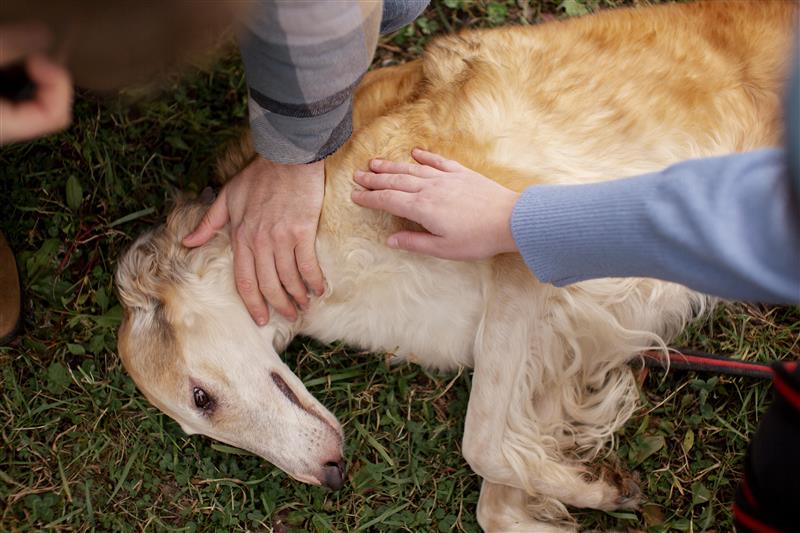
Contents
Asthma is a chronic respiratory condition that affects pets, just as it does in humans. Pets with asthma suffer from inflammation and narrowing of the airways, making it difficult for them to breathe. Although asthma is more commonly seen in cats, dogs and other animals can also develop this condition. Asthma attacks in pets can be frightening, as they can cause difficulty breathing, wheezing, and extreme distress.
Recognizing and responding promptly to asthma attacks in pets can make a significant difference in your pet’s health. In this blog, we’ll explain how to identify asthma attacks in pets, how to provide first aid, and when to seek emergency care.
What is Asthma in Pets?
Asthma is a condition that affects the lungs and airways, leading to inflammation, narrowing of the bronchial tubes, and difficulty with airflow. In pets, asthma can be triggered by allergens, irritants, or respiratory infections, leading to asthma attacks.
Common causes of asthma in pets include:
- Environmental Allergens: Dust, pollen, mold, smoke, or strong odors can trigger asthma attacks.
- Inhaled Irritants: Fumes from household cleaning products, air fresheners, or even strong perfumes can be irritants.
- Respiratory Infections: Bacterial or viral infections can worsen asthma symptoms and cause attacks.
- Obesity or Overweight: Being overweight can exacerbate asthma symptoms and increase the frequency of attacks.
Asthma attacks are often episodic and can range from mild to severe. The good news is that with proper care, pets with asthma can lead relatively normal lives, but asthma management is key to preventing attacks.
Signs of an Asthma Attack in Pets
Recognizing the symptoms of an asthma attack is crucial for timely intervention. The signs of asthma attacks in pets vary in severity, and some attacks may be mild, while others can be life-threatening. Here are the common symptoms to watch for:
- Labored or Rapid Breathing
Pets experiencing an asthma attack often have labored breathing or shortness of breath. You may notice your pet breathing more rapidly than usual, or they may appear to be struggling to inhale or exhale. - Wheezing
Wheezing is a common sound made during an asthma attack, especially when your pet is exhaling. It is caused by the narrowed airways and is an indication that your pet is having difficulty breathing. - Coughing
Persistent coughing, particularly dry, non-productive coughs, is a common sign of asthma. This can occur during or after exercise, when exposed to irritants, or when your pet is experiencing an asthma attack. - Open-Mouth Breathing or Gasping
Pets with asthma may open their mouth to breathe or appear to gasp for air, especially during an attack. This is a sign of severe respiratory distress and requires immediate attention. - Restlessness or Anxiety
During an asthma attack, your pet may appear anxious, restless, or panicked due to the difficulty in breathing. They may seek out a quiet place to lie down or attempt to adjust their posture to make breathing easier. - Lethargy or Weakness
If an asthma attack is severe, pets may become lethargic or weak due to reduced oxygen intake. They may not want to engage in normal activities or may appear fatigued. - Bluish Gums
A blue tint to your pet’s gums or tongue is a serious sign that they are not getting enough oxygen. If you notice this symptom, get your pet to an emergency vet immediately.
First Aid for Asthma Attacks in Pets
If your pet is experiencing an asthma attack, it’s important to act quickly. While you should always consult a veterinarian for long-term management, here’s what you can do in an emergency:
- Stay Calm and Keep Your Pet Calm
Stress can make asthma attacks worse. Keep yourself calm to avoid further stressing your pet. Try to soothe your pet by speaking softly and gently, and keep them in a quiet, cool environment to reduce agitation. - Help Your Pet into a Comfortable Position
If your pet is experiencing an asthma attack, help them into a position that may help them breathe easier. Place them in a sitting or standing position to allow their chest to expand fully. If your pet is lying down, try to elevate their chest to make breathing easier. - Use a Humidifier or Steam
If you have access to a humidifier, turn it on to add moisture to the air. Alternatively, you can run a hot shower to create steam, which may help open your pet’s airways and make breathing easier. Allow your pet to breathe in the steam for a few minutes. - Administer Bronchodilators (If Prescribed by a Vet)
Some pets with asthma may be prescribed bronchodilators to help open up their airways during an attack. If your vet has given you an inhaler or nebulizer for your pet, administer it according to the prescribed dosage. Never use human medication for your pet unless advised by your veterinarian. - Monitor Your Pet’s Condition
Keep a close eye on your pet’s condition. If they seem to be improving, continue to keep them calm and avoid any physical exertion. However, if the symptoms do not improve or get worse, seek emergency care immediately.
When to Seek Emergency Care for Asthma Attacks in Pets
In some cases, asthma attacks can be severe and may require emergency veterinary care. You should seek immediate help if:
- Your pet’s breathing is extremely labored, and they are struggling to catch their breath.
- They are gasping for air or displaying open-mouth breathing.
- You notice a blue tint to their gums or tongue, which indicates a lack of oxygen.
- Your pet’s symptoms don’t improve or get worse despite your intervention.
- Your pet collapses or becomes unresponsive due to the lack of oxygen.
- They have persistent coughing or wheezing for more than an hour after the attack.
Asthma attacks can be fatal if not treated promptly, and in these situations, seeking emergency care for pets is crucial.
Long-Term Management of Pet Asthma
If your pet is diagnosed with asthma, long-term management is key to preventing attacks and improving their quality of life. Some common management strategies include:
- Inhalers and Medications
Your vet may prescribe inhalers, bronchodilators, or steroid medications to manage your pet’s asthma. It’s important to follow the treatment plan exactly as prescribed and administer medications on time. - Environmental Changes
Reducing exposure to environmental triggers like smoke, dust, pollen, and strong chemicals can help prevent asthma attacks. Keeping your home clean, using air purifiers, and avoiding smoking around your pet can improve their respiratory health. - Weight Management
Maintaining a healthy weight is essential for pets with asthma. Obesity can worsen asthma symptoms, so feeding your pet a balanced diet and encouraging gentle exercise can improve their condition. - Routine Vet Check-ups
Regular veterinary visits are important for monitoring your pet’s asthma. Your vet will assess your pet’s progress, adjust medications as needed, and check for any complications.
Conclusion
Asthma in pets can be a challenging condition, but with proper management and quick intervention during asthma attacks, your pet can live a comfortable, healthy life. By recognizing the symptoms early and acting quickly during an attack, you can help your pet breathe easier and reduce the risk of complications.
At North MS Pet Emergency, we are always ready to provide emergency care for pets during asthma attacks or other respiratory issues. If your pet is showing signs of respiratory distress, don’t hesitate to contact us for immediate care.
Contact us now for urgent care, or visit us for emergency care for pets after hours.




